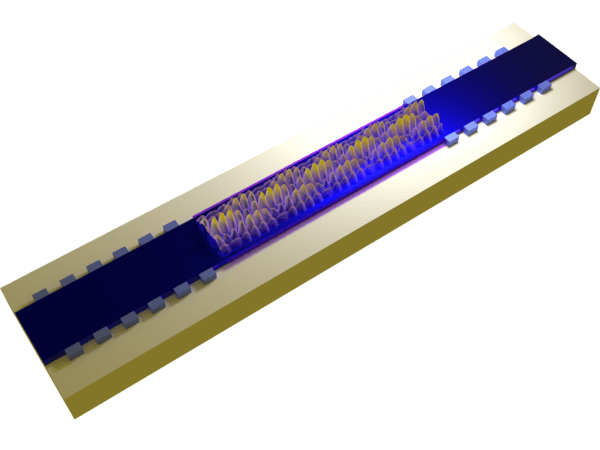Researchers in the lab of Federico Capasso at Harvard University’s School of Engineering and Applied Sciences (SEAS) have developed a supermode optical resonator. The technology could have applications in telecommunications, laser technology, and fiber optics, among other areas.
“This is an advance that alters in a fundamental way the design of resonators by using reflectors that convert light from one pattern to another as it bounces back and forth,” said Capasso, the Robert L. Wallace Professor of Applied Physics and Vinton Hayes Senior Research Fellow in electrical engineering at SEAS.
Optical resonators are a key component in a broad swath of technologies. Optical resonators consist of two reflectors that bounce light back and forth, concentrating light in lasers for example, or filtering out frequencies of light in areas such as fiber optics and telecommunications, said Vincent Ginis, first author of the research paper, a visiting professor at SEAS, and an assistant professor of mathematics and physics at the Vrije Universiteit Brussel.

A visualization of a cascaded-mode resonator, where a supermode resonance is created by reflecting the light back in a different mode at each reflection. Courtesy of Capasso Lab, Harvard SEAS.
Until now, resonators and the two reflective mirrors inside them controlled the intensity and frequency of light — but not the mode of light, which determines the shape and manner in which photons flow through space and time.
According to Ginis, the research team aimed to achieve multimode coupled light within a resonator, something that was not possible with traditional resonators, aiming to circumvent well-known resonator design trade-offs.
“Cascaded-mode resonators are an improvement over traditional Fabry-Pérot resonators because they allow for the creation of ‘supermodes,’ longitudinal modes that couple different transverse waveguide modes together,” Ginis told Photonics Media. “While Fabry-Pérot resonators can control the intensity and frequency of light, they do not control the transverse mode of light, which determines the transverse shape in which light propagates.”
Light is often thought of as moving in a beam or a straight line, but beams of light are also capable of traveling in other modes, such as spirals. The resonator developed by Capasso’s team, according to the researchers, is the first device that gives scientists precise control over the mode of light. Even more importantly, the device enables multimode coupled light to exist within the resonator. This was achieved by etching a new type of pattern on the surface of the reflectors at each end of the resonator device.

“We realized that we could test our novel resonator concept in an integrated photonics platform, and chose silicon-on-insulator, which is used by many scientists and companies for applications such as sensing or communications,” said Cristina Benea-Chelmus, a research associate in the Capasso group and assistant professor of microengineering at the EPFL Institute of Electro and Microengineering, who spearheaded the experimental part of the work.
The etchings, about 300 to 600 nm in size, gave the team control over the shape of light beams inside the resonator. Using reflectors with different patterns on either end of the resonator unlocked their ability to change the shape of light as it moves.
“This breakthrough has significant potential for improving the bandwidth of information that can be transmitted using light and unlocking new degrees of freedom for researchers to manipulate light inside resonators,” Ginis said.
Harvard’s Office of Technology Development has already protected the intellectual property arising from the Capasso Lab’s optical resonator innovations. It is also exploring commercialization opportunities.
According to Ginis, there are several steps that must be taken for the technology to find applications. For one, more research and development will need to take place to optimize the design and performance of the resonator and explore potential new applications.
“This could involve further experimentation with different materials and etching techniques, as well as more in-depth studies of the resonator’s properties and capabilities,” Ginis said.
He added that the concept of cascaded-mode resonators could be applied to other electromagnetic resonances in addition to optical resonators.
“The resonator design is based on the idea of using reflectors to convert light from one pattern to another as it bounces back and forth, and this could potentially be applied to other types of electromagnetic radiation,” he said.
If successful, Ginis said, such efforts could have significant implications for applications including wireless communications, radar systems, and other electromagnetic sensing technologies. However, additional R&D would be required to determine the feasibility and potential benefits of applying cascaded-mode resonators to other types of electromagnetic radiation.
The research was published in Nature Communications (www.doi.org/10.1038/s41467-023-35956-9).